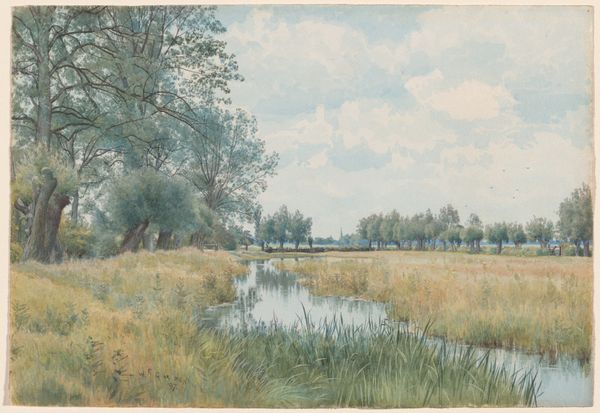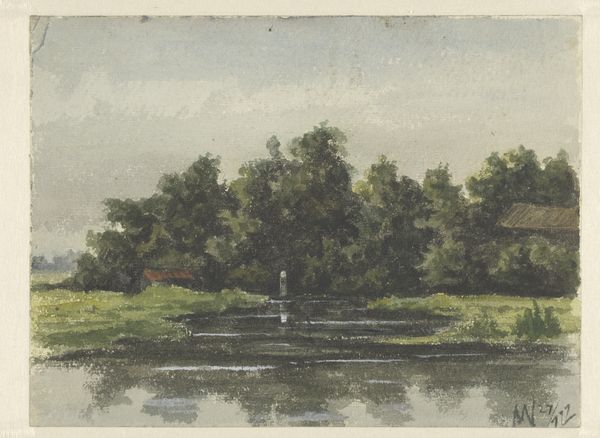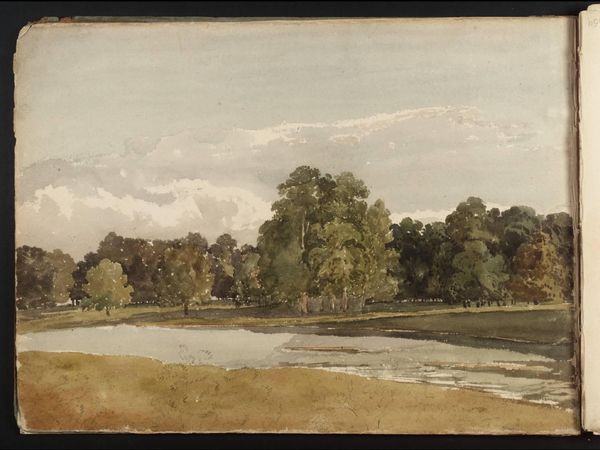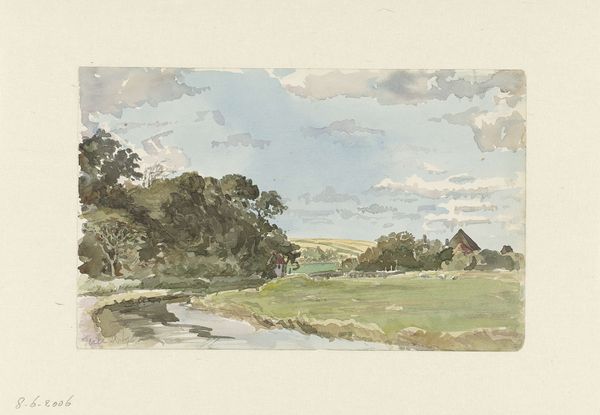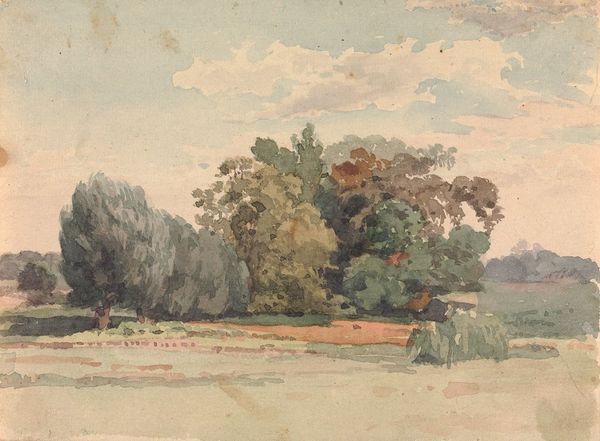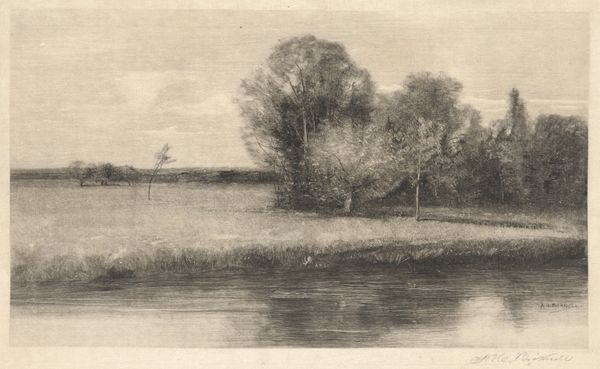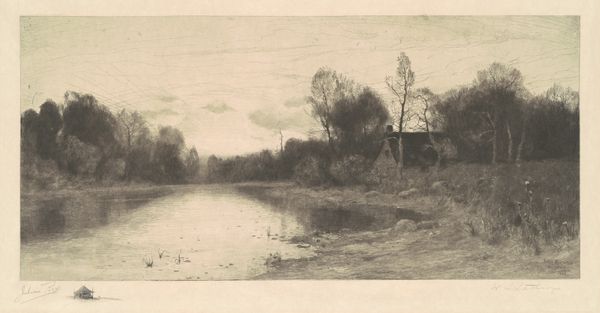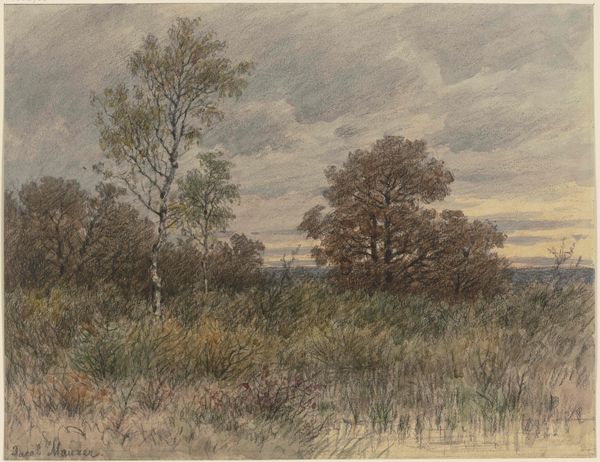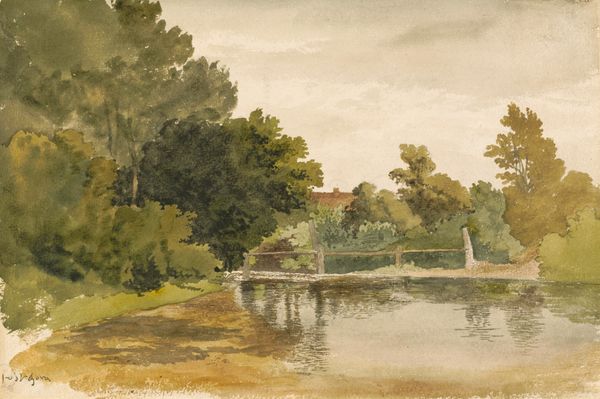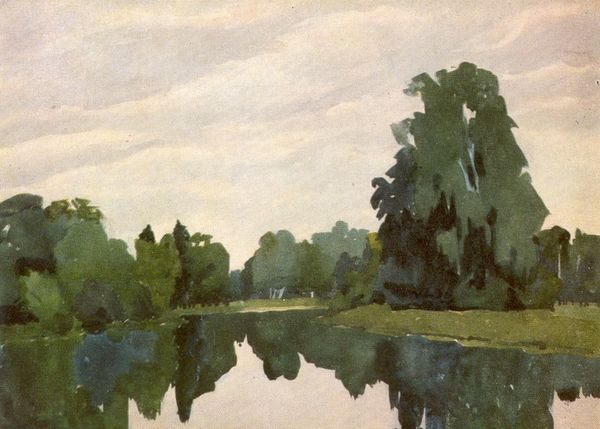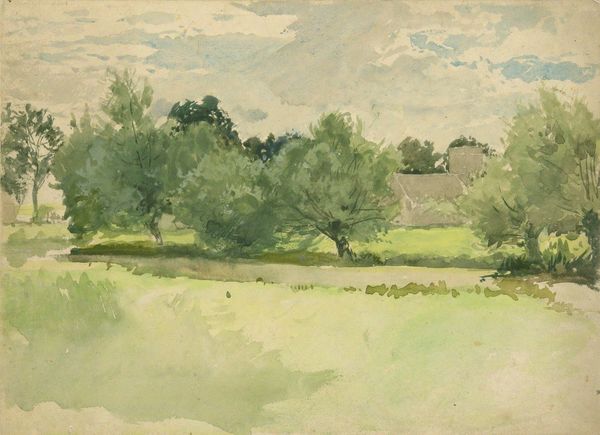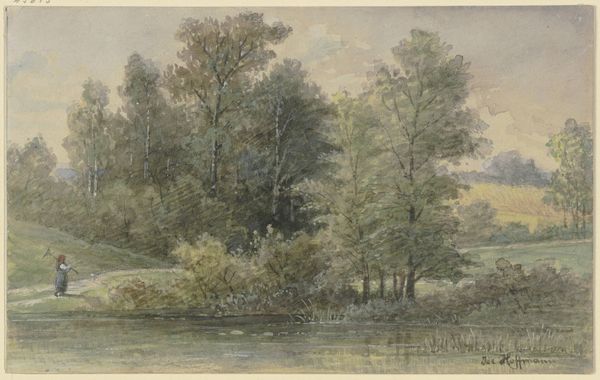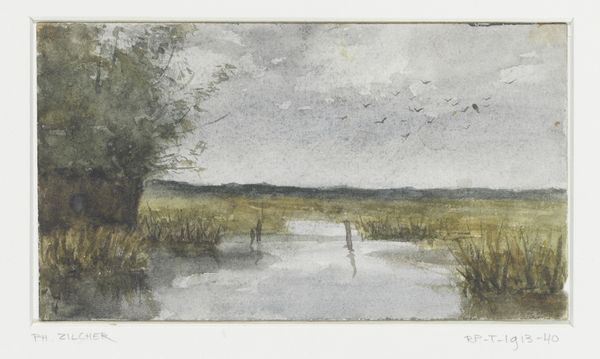
Copyright: Hryhorii Havrylenko,Fair Use
Curator: Let's turn our attention to Hryhorii Havrylenko's "Lake Shore," a watercolor drawing created in 1955. Editor: It strikes me as instantly peaceful. The soft watercolor washes create a dreamy atmosphere, like a half-remembered summer day. Curator: The "plein-air" approach emphasizes a direct connection between the artist, their materials, and the immediate environment. Given the era, it is valuable to consider if Ukrainian landscape painting offers a sense of stability against a backdrop of broader sociopolitical tensions. How might focusing on these everyday landscapes provide resistance? Editor: Indeed, watercolor carries its own history – often associated with immediacy and portability. We could explore where he sourced his paints or what the water quality in this area might suggest about the location’s ecological history. Curator: Absolutely. The material components speak to their own story. Looking at "Lake Shore" through a wider cultural lens, do you see a subtle commentary on land ownership and access in the Soviet period reflected here, maybe coded in the depiction of this open yet contained landscape? Editor: Possibly. However, I’m also intrigued by the surface itself – it looks as though the paper may have been handmade, perhaps locally? That would connect the physical making of the work more directly to the specific environment it represents. Were artists creating their own materials in defiance of a cultural system during that era? Curator: That’s an important detail that adds texture to this. This adds dimensions that disrupt the mainstream historical canon in ways that reframe discussions. Editor: Examining the intersection between the landscape itself, its representation, and the means of that representation – that’s what resonates for me. "Lake Shore" appears so simple, but prompts such deeper questions about materials, labour, and landscape. Curator: Yes. A vital addition to a growing canon challenging many institutional discourses of that period, inviting ongoing dialogues from this specific geographical viewpoint. Editor: Ultimately, a reminder that art’s meaning often lies within the nuances of its creation and context.
Comments
No comments
Be the first to comment and join the conversation on the ultimate creative platform.
